The Best Guide to Desert X 2019

Spanning Coachella Valley (and even a few spots in Mexico), the art biennial Desert X can be a daunting task to view. To save you time and even gas, we've compiled a quick, easy-to-view map of all the installations at this year's Desert X. Participating artists have created some thought-provoking pieces that touch on everything from the human experience of existence to the ecological state of our world today. Pia Camil's "Lover's Rainbow" takes a colorful and playful stance at immigration, while Nancy Baker Cahill's "Revolutions" and "Margins of Error" asks viewers to look beyond what their eyes can see in an augmented reality installation.
At a loss to figure out just which ones you would like to see? Check out our map below, which includes descriptions, photographs and the all-important coordinates to plug into your GPS.
Armando Lerma, "Visit Us in the Shape of Clouds"
On a water tower, local artist and Desert X 2017 participant Armando Lerma paints images of the American Southwest. Think snakes, birds, monkeys, seashells and plants. Their story illustrates that of migration and the transitory.
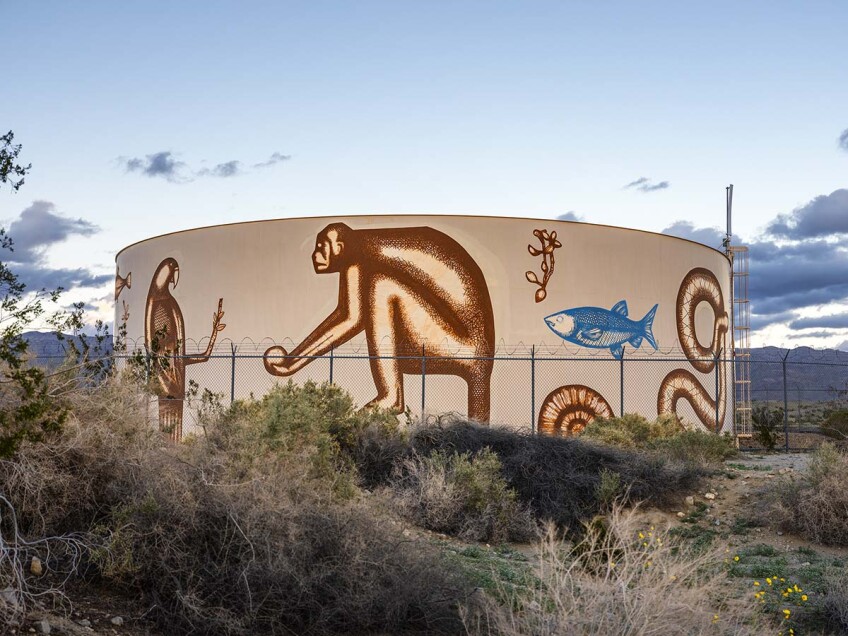
Cara Romero, "Jackrabbit, Cottontail & Spirits Of The Desert"
Once again using billboards to grab a motorist's attention, artist Cara Romero creates images of four fictitious time-traveling Chemehuevi children, placing them along Gene Autry between Vista China and the 10 freeway. The artist hopes that these playful and rather hopeful images can remind viewers of their "deep connections to the land, the stories contained within it and how we can live in relation to it."

Cecilia Bengolea, "Mosquito Net"
Part performance and part sculpture, "Mosquito Net" juxtaposes images of men and women dancing with those of dancing frolicking and places them on the North Shore.

Cinthia Marcelle, "Wormhole"
Marcelle places a television monitor inside six empty storefronts (five in Coachella Valley and one in Mexico) to give visitors a glimpse into another space at the same time, thus creating a technological wormhole in the world.

Eric N. Mack, "Halter"
Mack repurposes a defunct gas station and drapes it over with silks and tulles. The artist's aim is to create a space for reflection, a man-made oasis, in the middle of the desert. As of March 12, the artist has shared that this piece has been "vandalized, burned and stolen."

Gary Simmons, "Recapturing Memories Of The Black Ark"
Gary Simmons tries to capture ghostly memories of things past using handbuilt set of speakers made from the refuse of a post-Katrina Treme neighborhood in New Orleans. Musicians are able to reconfigure these speakers to their purpose and record a musical performance, which are played back through a television display. Visit on selected days in April and the space comes alive as the speakers are used in live musical performances by experimental Bay Area musicians playing reggae, jazz, hip-hop, techno and more.

Iman Issa, Surrogates, "A Film About Things To Be Used, In Order Of Appearance, By Self Or Others, For Touching Upon Larger, Insidious, Or Different Things"
The Egyptian artist Imman Issa installed a subtle pipe that feeds a cluster of cacti on the Sunnylands property meant to evoke an oil refinery. The artist is hoping to convey the insidious workings of geopolitics and the exploitation of natural resources.
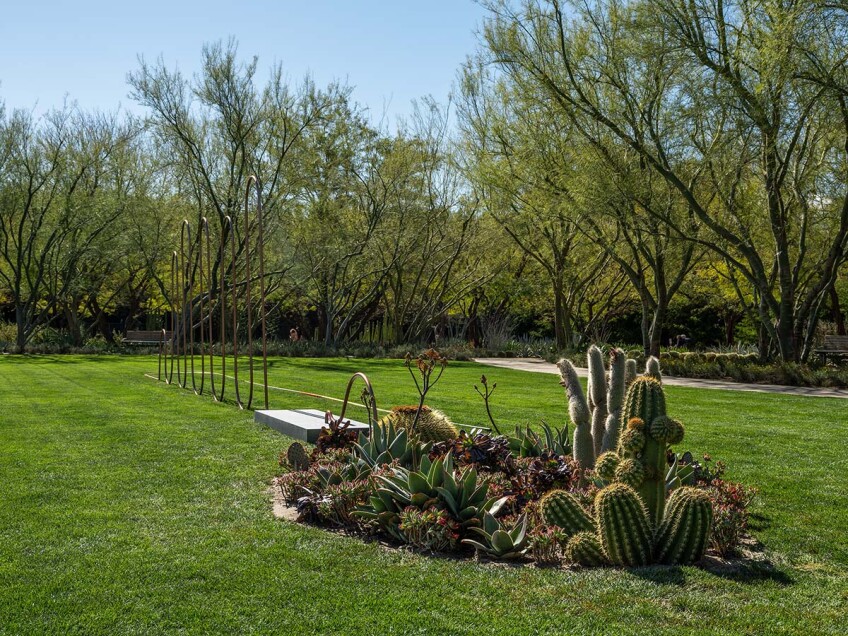
Iván Argote, "A Point Of View"
Concrete scales near Salton Sea's North Shore enable viewers to step above the landscape. Spanish and English messages appear on each step of the concrete stair to nowhere. Once there, viewers are able to turn towards each other in conversation or contemplate the vista before them.

John Gerrard, "Western Flag (Spindletop, Texas)"
"Western Flag" depicts the site of the Lucas Gusher, the world’s first major oil find (in 1901), located in Spindletop, Texas, now barren and exhausted. The site is a digital simulation, the center of which is marked by a flagpole spewing an endless stream of black smoke. The image is a live feed from Texas with a slight time delay and projected onto a large screen at the Palm Springs Visitors Center. It is a reminder that the world's resources is constantly being used and eventually be depleted.

Julian Hoeber, "Going Nowhere Pavilion #01" and "Executed Variant DHS #1 (Q1, CJ, DC)"
"Going Nowhere Pavilion #01" is a Möbius strip made from concrete breeze blocks in a variety of fleshy pinks and browns. "Executed Variant DHS #1 (Q1, CJ, DC)" is a painting in a nearby swimming pool. Both pieces are meant to recall the state of human consciousness — logical yet irrational.


Kathleen Ryan, "Ghost Palm"
Standing taller than 20 feet, Kathleen Ryan's "Ghost Palm" is a meticulous recreation of the largest palm species native to California, the Washingtonia filifera (desert fan palm). Ryan's version of the palm is created with mamade materials: steel, plastics and glass. The palm towers over the landscape, but tries to invisible. The only clue to its presence is when the sunlight catches its crystalline facets.

Mary Kelly, "Peace is the Only Shelter"
In "Peace is the Only Shelter," artist Mary Kelly uses the bus shelter to resurrect slogans borrowed from the Women Strike for Peace (WSP), a Cold War-era feminist group. She replaces the advertisements, routes and schedules with slogans from WSP and cartographies of military expansion in the California desert.

Nancy Baker Cahill, "Revolutions" and "Margin of Error"
Set in two locations near the extreme poles of Coachella Valley, Nancy Baker Cahill's two pieces, "Revolutions" and "Margin of Error" use augmented reality to produce a singular experience. To the north, near the windmill farms, "Revolutions" alludes to the capturing of energy that man needs to remedy a manmade crisis. To the south, at Salton Sea, "Margin of Error" presents the toxic outcome of human progress leading to an environmental disaster.
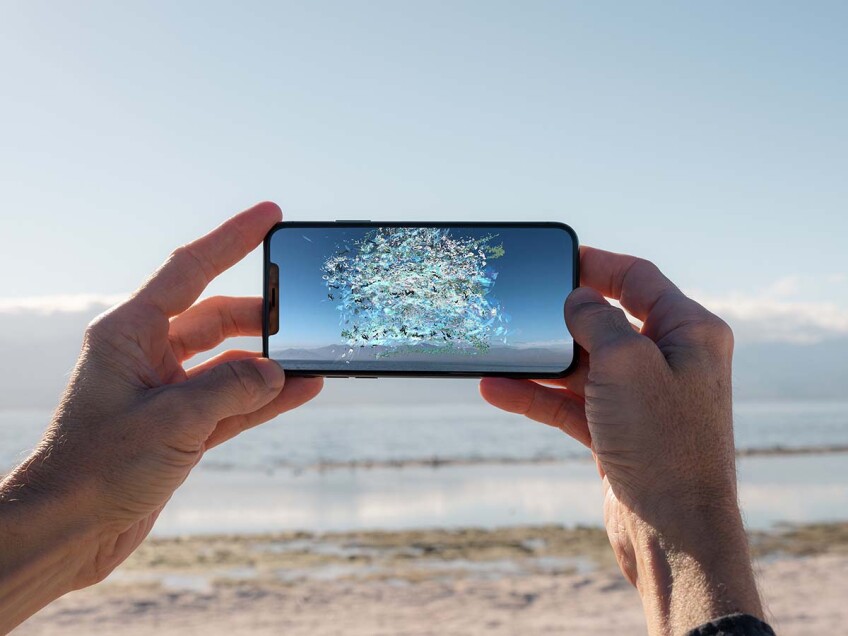

Pia Camil, "Lover’s Rainbow"
Set in two locations across the U.S.–Mexico border (Baja, Mexico and the Coachella Valley), "Lover’s rainbow" is conceived as an identical set of rainbows made from painted rebar.

Postcommodity, "It Exists in Many Forms"
"It Exists in Many Forms" is a sound work inspired by conversations between Postcommodity and the artists and owners of midcentury modern homes in Palm Springs. The work is installed in a house, which means there's limited availability and tickets need to be secured for free on desertx.org.
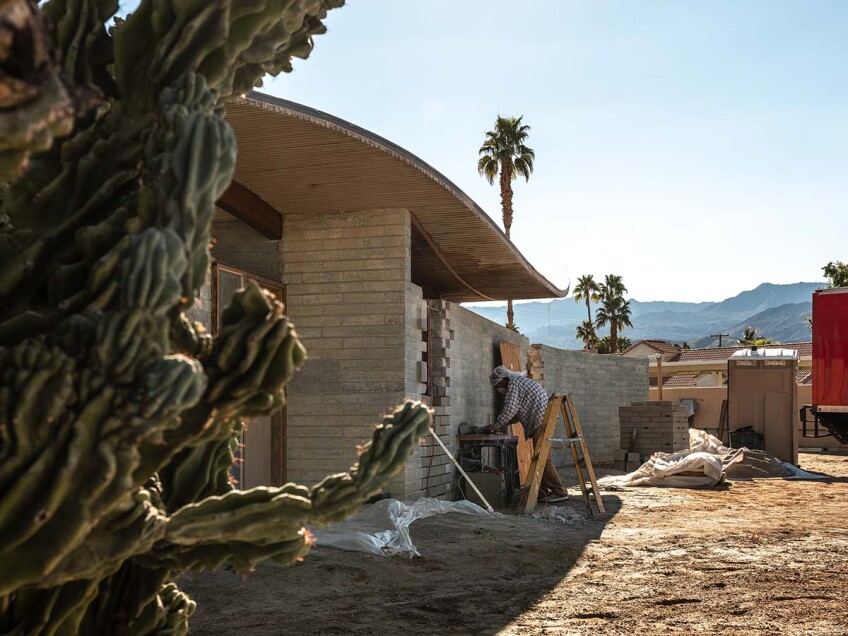
Sterling Ruby, "Specter"
Sterling Ruby's "Specter" is a fluorescent orange geometric sculpture that almost looks like a Photoshopped-image when images are taken on cameras.

Steve Badgett and Chris Taylor, "Terminal Lake Exploration Platform"
The solar-powered Terminal Lake Exploration Platform (TLEP) captures the desert floor beneath the Salton Sea State Park lake.

Superflex, "Dive-In"
Danish collective Superflex rethinks architecture by creating a structure that's equally attractive to human and marine life. Using the preferred color palettes of Walter and Leonore Annenberg, Palm Springs, and marine corals, the collective created a geometric frame that evokes the pocky texture of corals and used that as a frame for a drive-in movie screen. The artists are juxtaposing a future where rising sea levels submerge the landscape, as well as a dying form of entertainment: the outdoor movie theater. Weekly movie screenings occur every Saturday from 6 to 8 p.m.
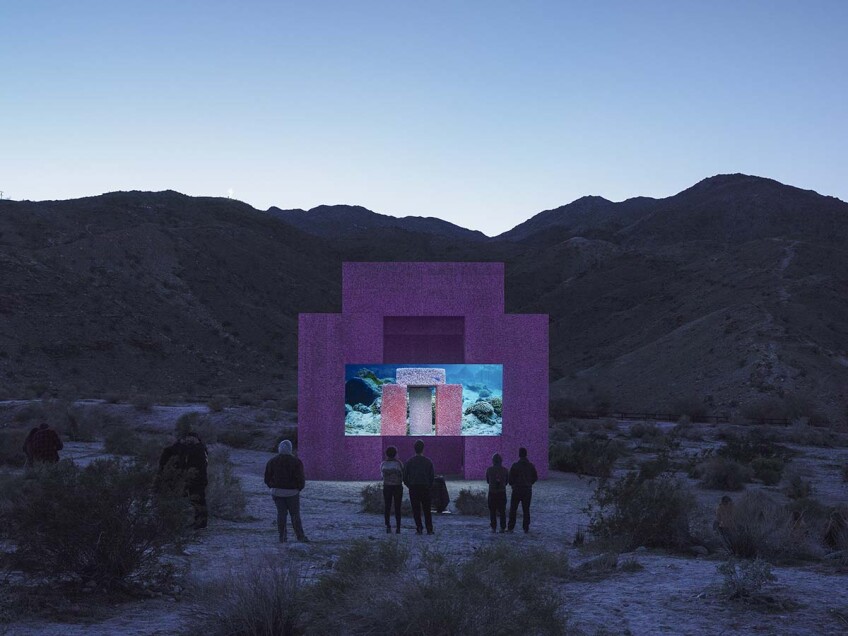
Top Image: Desert X installation view, Cara Romero, Jackrabbit, Cottontail & Spirits Of The Desert, 2019 | Lance Gerber, courtesy of Desert X



